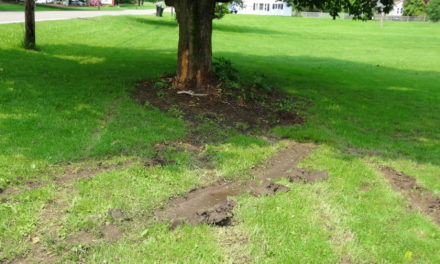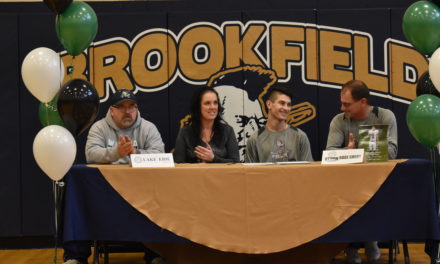Brookfield Local School District’s state report cards are a real mixed bag, but one thing stands out: the kids do not do very well on the state tests.
The elementary, middle and high schools each earned a D for achievement, which essentially reflects their test scores.
To try to improve those scores, administrators and teachers are looking over the standards, the skills and knowledge that students are expected to learn, “and then we’ll start getting into aligning our assessments, our tests, to those standards,” said middle school Principal Toby Gibson.
The schools use various assessment tools to gauge how a student is doing, and organize an intervention program for students who need help.
By using more science, engineering, technology and math and project-based learning activities, the middle school hopes to bolster critical-thinking and problem-solving skills, Gibson said.
“This obviously is going to help any time they’re in a situation where they might not quite understand the situation or the question posed, like an AIR test in the spring, and help build that skill to work through those problems,” Gibson said.
The middle school received a B in progress, which measures the growth of students based on past performance, but an F in gap closing, which measures how well a school met the performance expectations for its most vulnerable students.
The elementary school earned Ds in progress and improving at-risk readers and an F in gap closing.
Elementary Principal Stacey Filicky said she and others at the elementary are spending more time going over reports from the iReady online assessment program, which also is used at the middle school.
“Last year, it was more just getting the basics and rocking and rolling and now we’re looking more at the fine details and how we can fix those fine details and the best way to attack them,” she said.
Students are getting more individual attention based on their needs, and teachers are being taught how to better use the iReady system, she said.
“Math is a big focus for my building this year,” Filicky said, adding that tutoring in math is now available in second grade in addition to grades three and four. “We’re struggling with the math in iReady.”
The school has developed an assessment tool to measure gap closing, which is something it didn’t have last year, and the plans for students who are not reading as well as they should have become much more detailed, she said. Parents are brought into the process more quickly, she said.
The high school scored Bs in progress, gap closing and graduation rate, and principal Adam Lewis noted the school was one student away from earning an A in graduation rate.
The school has struggled in English language arts and math, and teachers are using assessment tools to try to determine early who needs extra help, Lewis said.
The school has an early-warning system based on grades and attendance to track how students are progressing toward graduation, and teams of teachers “figure out strategies to get them back on track,” he said. As of Oct. 17, 67 percent of students were on-track to graduate, 12 percent “could go either way,” and 20 percent are off-track, Lewis said.
The high school also was graded on how prepared students are for success and scored an F. This score is based on student participation and scores in the ACT college-entrance exam, and any industry credentials they earn, such as through Trumbull Career and Technical Center.
“One of the ways that we’re going to try to attack that is to try to get more of our kids industry-credentialed, here, in-house,” Lewis said. “If there’s a kid that maybe isn’t college-bound, that didn’t go to TCTC, we’re going to try to provide a few options for them to still work towards an industry credential.”








